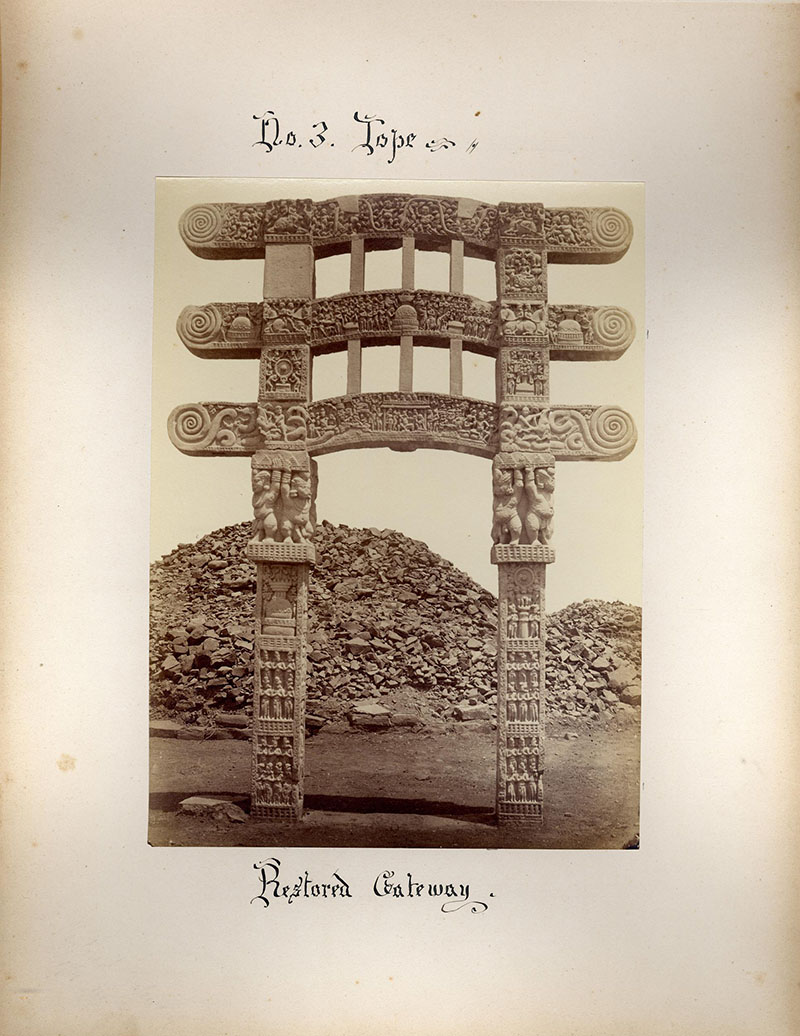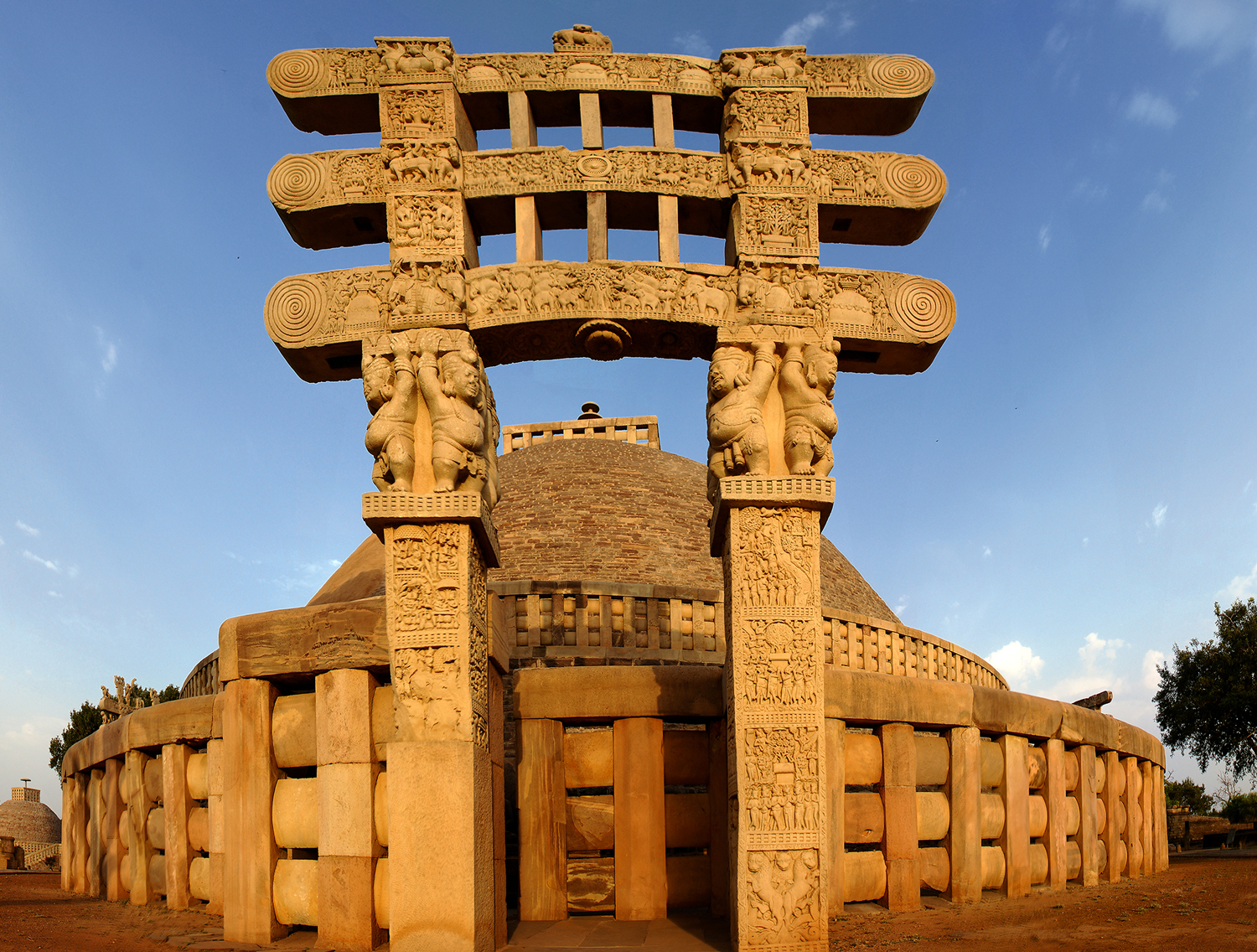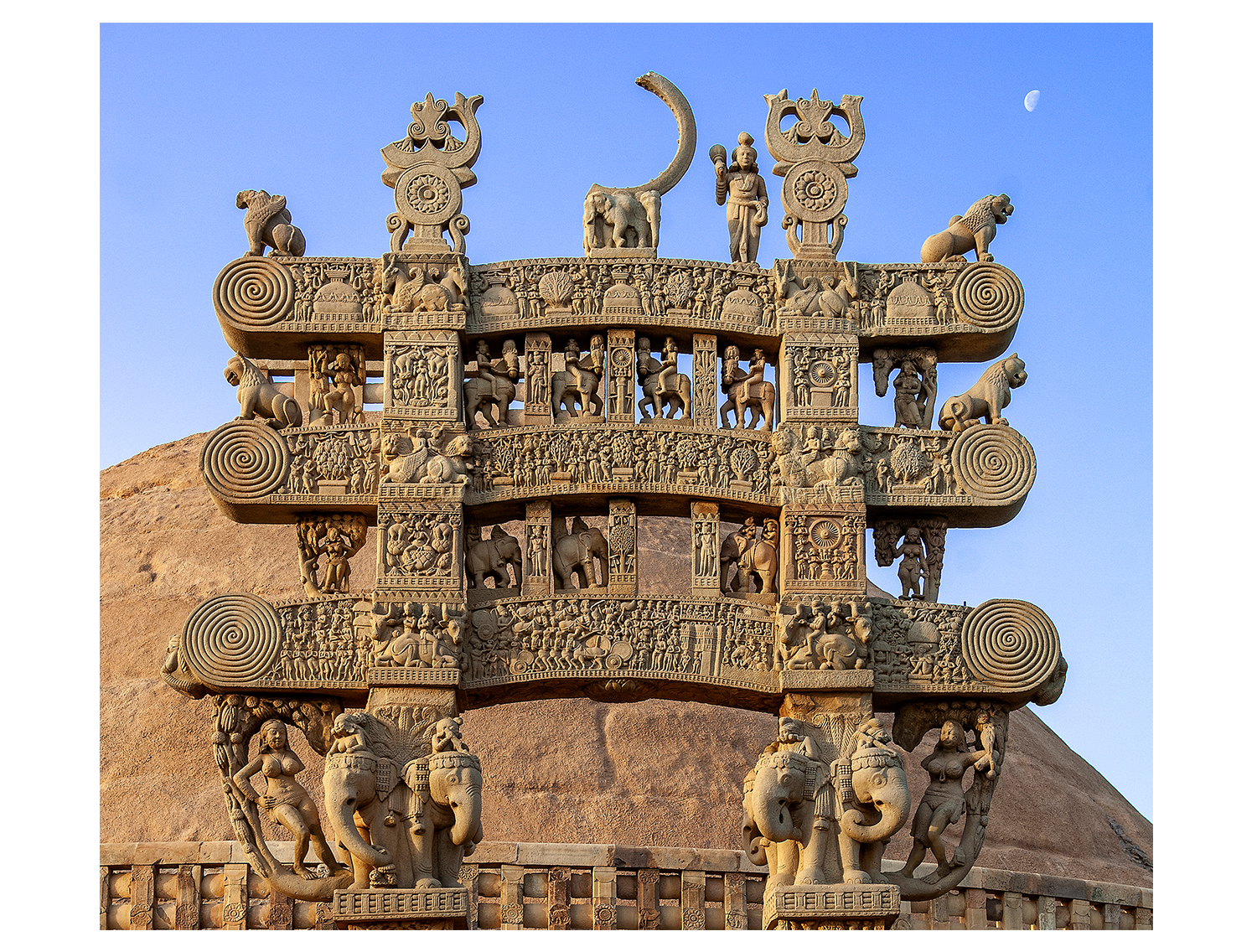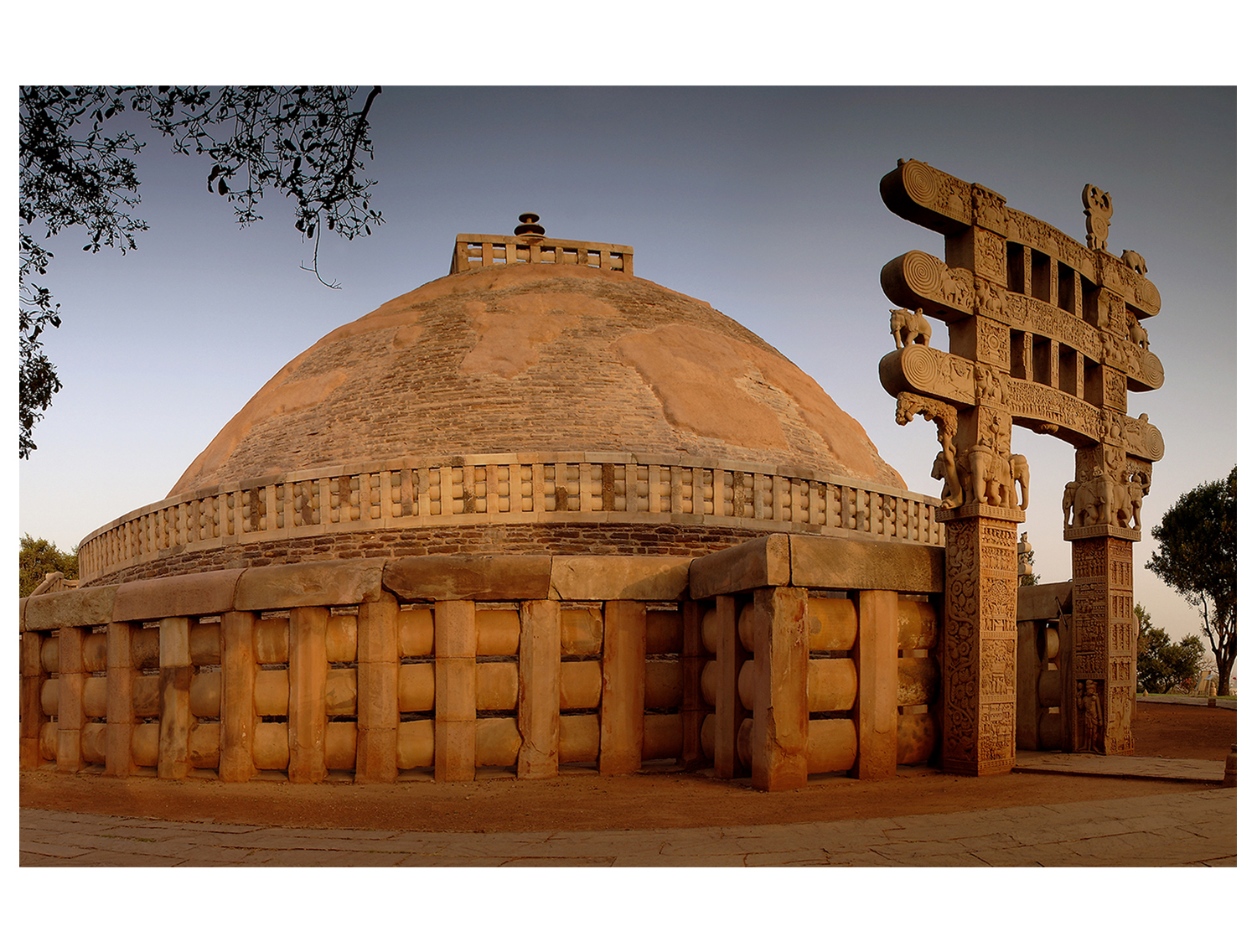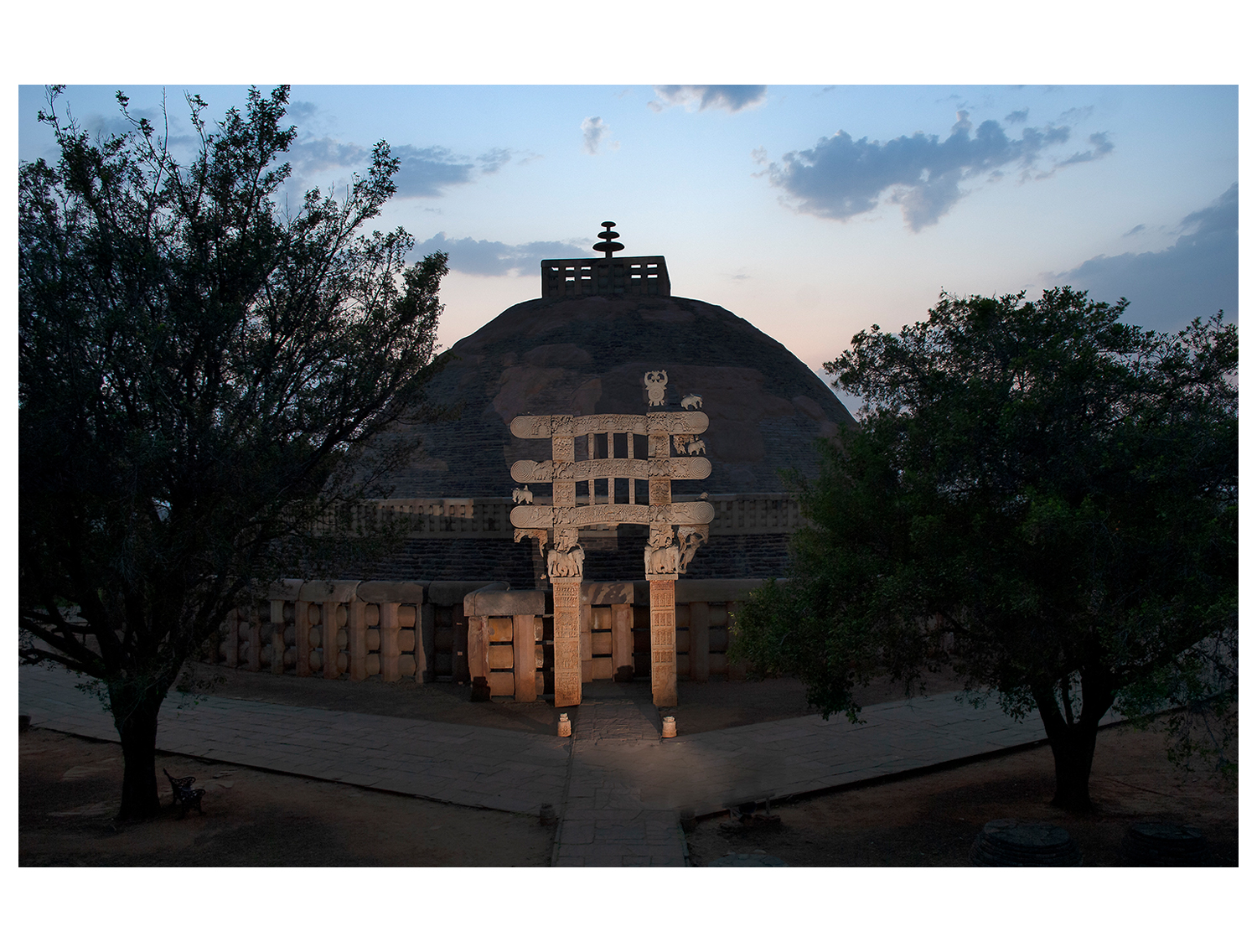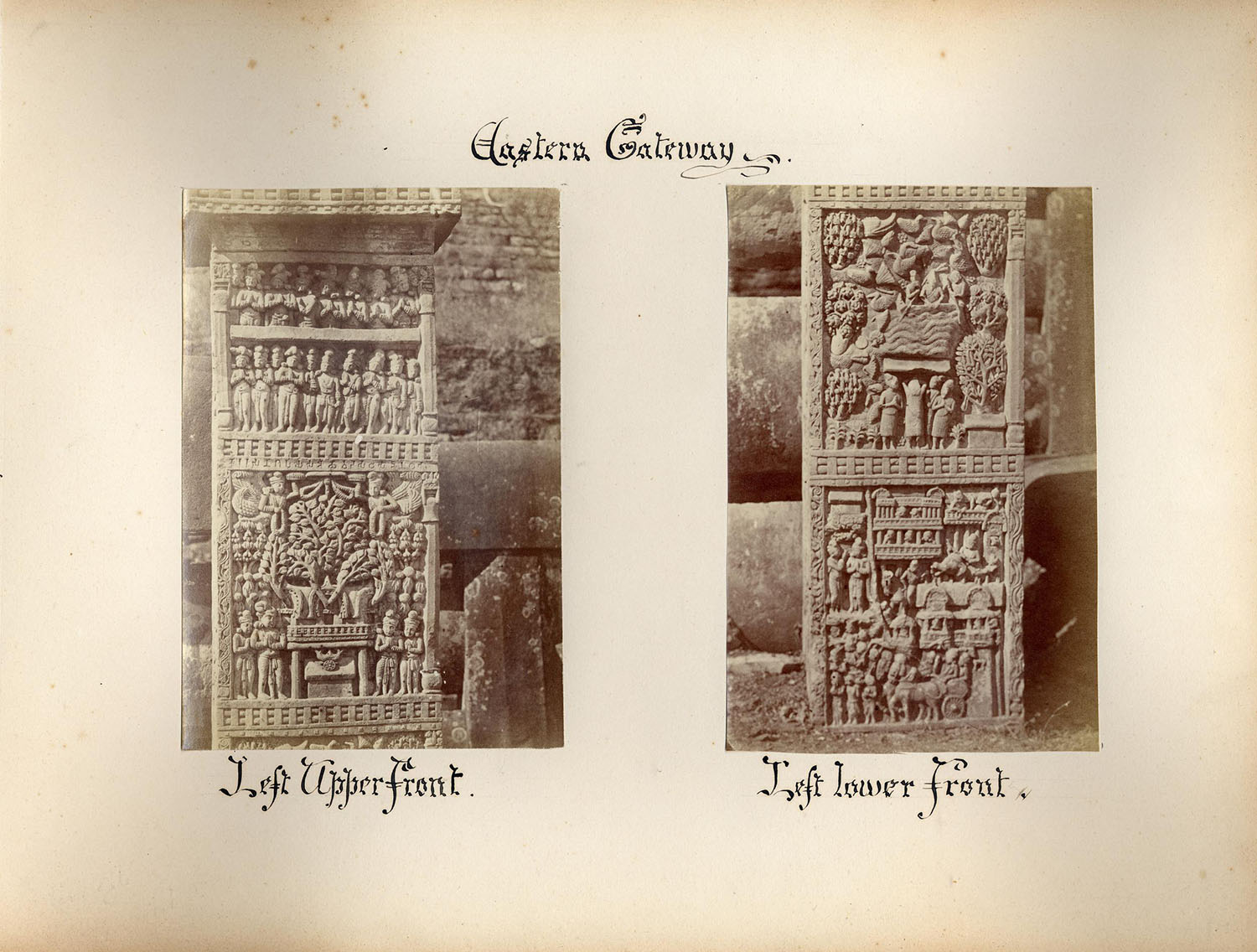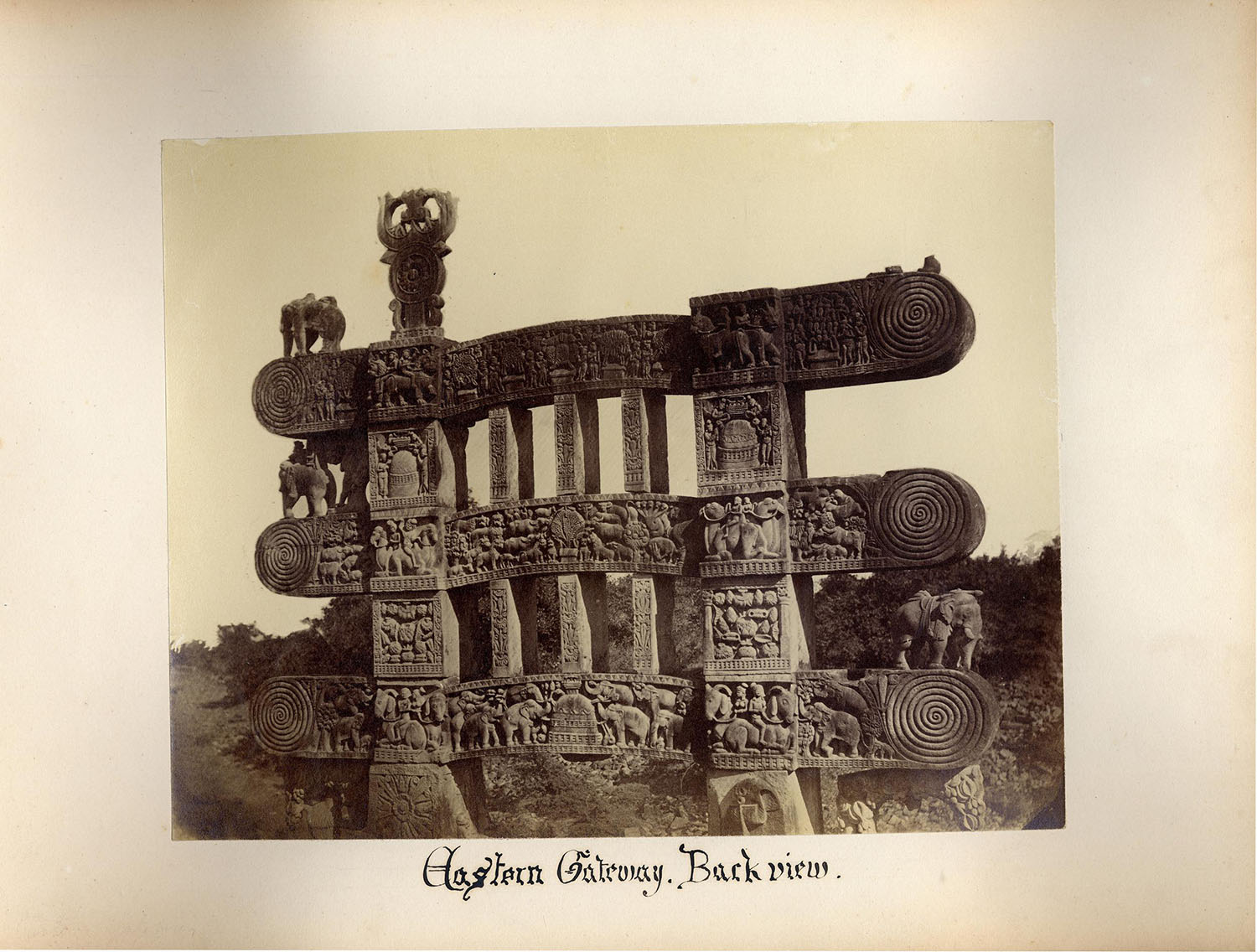Four intricately carved sandstone gateways, or toranas, which were added to Sanchi Stupa I in Madhya Pradesh in the first half of the first century CE. These gateways are some of the earliest examples of stone sculpture in the Indian subcontinent and are characteristic of early Buddhist art, particularly the narrative aniconic style. The gateways, each approximately 10.6 metres high, are thought to have been executed between twenty to thirty years, during the first decade of the century.
The gateways are placed on the cardinal points of the stupa and are carved throughout — from the columns to the architraves — with narrative panels showcasing elaborate iconographic conventions followed in early Buddhist art. Scholars believe that the southern gateway was the principal entrance and was erected first, followed by those in the north, east and west respectively. Each gateway is intricately carved in sandstone and consists of two square columns crowned with capitals, depicting lions, yakshas or elephants, that support three curved architraves with scrolled ends. Some scholars believe that the lion capitals, found on the southern gate, were carved to resemble the lion capital at Sarnath. In many cases, these gateways were constructed using resources through a combination of gifts and donations from various individuals or groups. The names of artists and patrons are often inscribed directly on the gateways, allowing scholars to date their development, and that of the overall site, with greater certainty. For instance, the right column of the western gateway and the middle architrave of the southern gateway were credited to “Balamitra, the pupil of Aya Cuda.” Further, the inscribed names of ivory workers from nearby Vidisha point to the use of craftsmen from outside Sanchi to carry out commissioned work.
These gateways — not the vedika, or the stupa — are the principal carriers of carvings at Sanchi. The columns and architraves of the gateways depict scenes from the Buddha’s life as well as stories from the Jatakas. The carvings also include Buddhist iconography, such as the dharmachakra, triratnas, various yakshas and yakshis and other animal, plant and floral motifs. Although the Buddha does not appear in human form, he is represented through aniconic depictions such as the buddhapada and the bodhi tree, as well as through narrativised events from his life.




